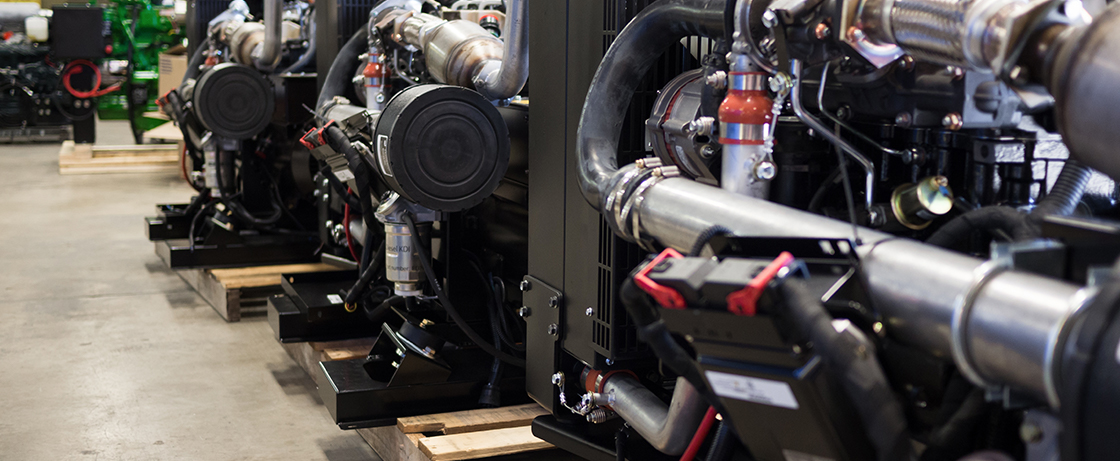Industrial generator sizing takes careful planning and a complete audit of your application to determine best value options. Taking the time to analyze the equipment used in your operations will lead to an efficient and reliable generator that will provide critical power in times of need.

Getting started: industrial generator sizing
Whether it’s prime or backup power generation, the first question to ask is, “what do I need to accomplish with this generator?” The goal is to find out what pieces of equipment you need to run when utility power isn’t an option and how much power do they require.
Make a collection of the devices and instruments you need to have running for your operation along with the amount of wattage it takes to start and run each piece of equipment. Much of this information can be found in owner’s manuals for the equipment, on specification plates affixed to the equipment or with the help of an electrician.
For backup generators, the key is determining your critical power requirements. What are the essentials you need to keep running should utility power go out? Whether prime or backup power is required, simply add up the voltage requirements needed based off your equipment specifications for a starting estimate.
How to plan for future scalability
A common mistake when sizing an industrial generator is to buy one that is too large for the application. Running a generator with too light of a load can result in serious damage and wasteful inefficiencies. Whenever the generator is running, you have to utilize at least 35% of the load capabilities.
We commonly run into issues where a client says they will add additional equipment in the near future, but it doesn’t happen fast enough and the generator they just purchased is suddenly damaged or wasteful. We end up having to sell extra equipment so they can run the minimum sized load until their additional equipment is installed.
On the other hand, you certainly don’t want a generator that is too small to handle the load. This can cause detrimental damage to the generator along with damage to connected assets. Additionally, overloading a generator causes potential for electrical fires and production downtime for repairs.
So, when scaling for future applications, it’s okay to buy a generator that is larger than what you currently need, as long as your minimum load reaches 35% of the load capability of the generator.
What type of load will your generator primarily run?
One of the main considerations to be aware of is the type of load or combination of loads you are looking to power. It comes down to identifying if each piece of equipment is a resistive or reactive load.
Resistive loads involve converting electrical currents into another form of energy. The electrical current is in phase with the voltage of the application, as opposed to first rising to a higher value before lowering. Smaller devices such as televisions, stereos and hotplates are resistive loads.
Reactive loads typically involve an electrical motor and require much more power to start before leveling off for continuous running. Larger devices that include electrical motors such as air conditioners, well pumps and power tools are reactive loads. If your application includes many reactive loads, a larger generator may be needed to properly handle the initial start and continual operation of equipment.
What type of fuel does your generator need?
When sizing an industrial generator for your application, you’ll come across two different types of generators you can procure, ones that run on diesel and ones that run on natural gas. Diesel and natural gas generators are great options but for different reasons. Diesel generators require less maintenance, are smaller in size and are generally safer since diesel is less flammable and less explosive. However, fuel costs fluctuate and you have to be able to procure and store fuel until it’s needed.
Natural gas generators are connected to the gas line which creates a readily-available fuel source. Additionally, they cost less to build and don’t have the typical pungent odor associated with burning diesel fuel. But, not all locations have a gas line available to connect to, the generator requires more maintenance and typically has a shorter lifespan.
A quality generator supplier can help with every step of the process. They have experts trained to assist with application audits and examination of additional considerations. You’ll find best value options by gathering the information detailed above and working closely with generator experts.
Request a consultation
CK Power has been sizing industrial generators for decades. We can help audit your application, determine power generator requirements and identify generator solutions. Request a consultation to speak with one of our generator experts.